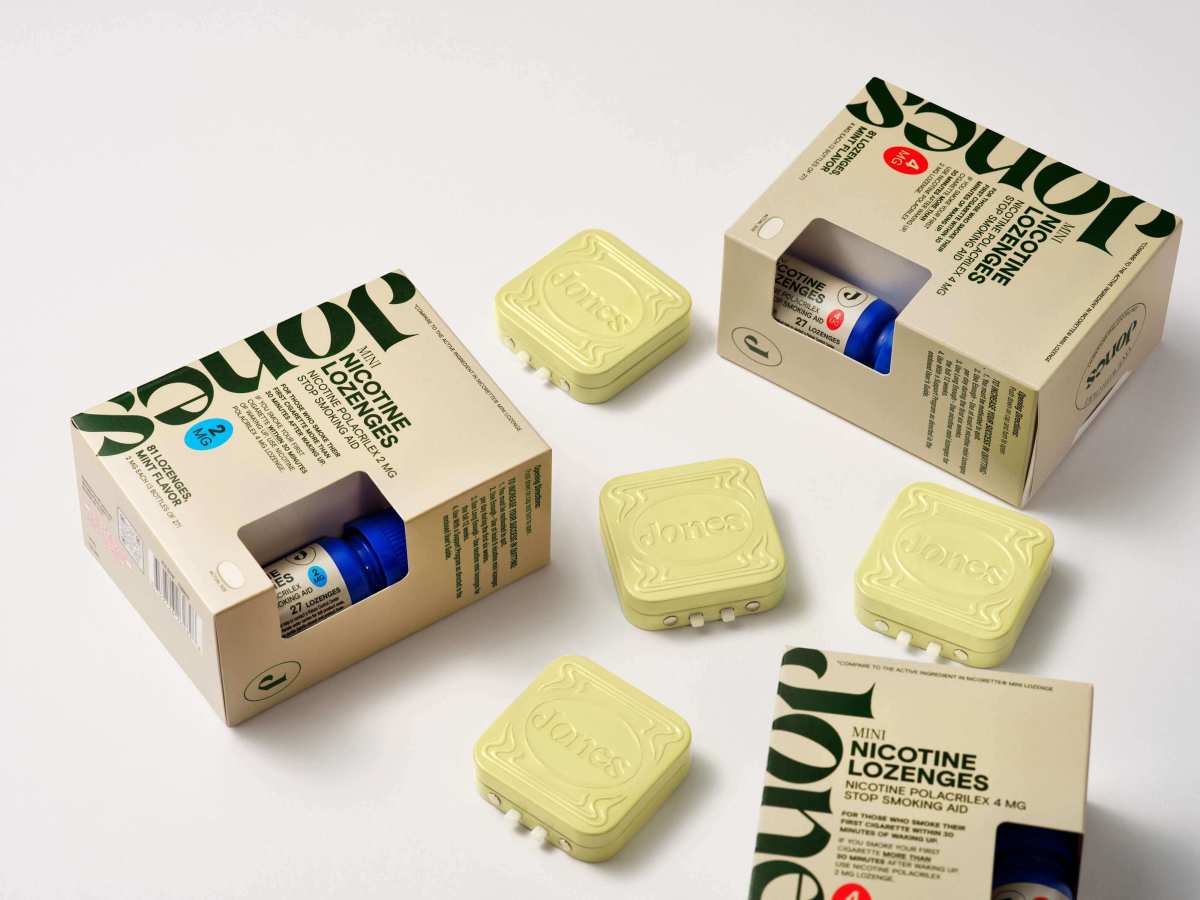Denver-based Koloma has quietly raised US$91 million to drill for carbon-free hydrogen that’s continuously generated underground. If it succeeds, it could turbocharge the clean energy revolution — and potentially tap a US$1 trillion market.

It’s been 37 years since a subterranean coal fire forced Tom Darrah’s family to flee their home in Centralia, Pennsylvania. Decades later, the fire that started in the Kennedy era still burns underground through fractured coal seams, spewing carbon dioxide and toxic hydrogen sulfide, turning Centralia into a ghost town. It’s one of the longest-running environmental disasters in U.S. history.
A framed photo of Centralia in the years before the fire anoints the wall of Darrah’s office at Ohio State University, where he’s a professor of earth sciences and one of the world’s foremost experts on a new form of underground energy that could dramatically speed the shift away from planet-ruining fossil fuels: so-called “geologic” hydrogen, which has been found in vast deposits along tectonic plates, where conditions are ripe for the lightest element on earth to remain in its pure, gas form.
“It’s on every continent,” he said. “The scale of how much there is is profound.”
As is its potential to temper a looming climate catastrophe already heralded by ever-fiercer heat waves, heavier rainstorms and more violent hurricanes. That’s because the universe’s most abundant element is carbon-free and has the highest energy content of any fuel by weight. But no one has tapped into the underground variety and scaled it into a business.
“It’s on every continent. The scale of how much there is is profound.”
Dr. Tom Darrah, Koloma co-founder
Koloma, a secretive Denver startup, thinks it’s figured out how to do exactly that. And co-founder Darrah, who’s listed on 16 filed patents for finding and efficiently extracting hydrogen, is planning for a future where we drill for hydrogen just as we’ve historically drilled for oil and gas. Koloma, quietly founded two years ago and operating in stealth until now, is drilling its first wells in the Midwest, testing rock and gas samples from them at Darrah’s Columbus lab to determine which sites have the best hydrogen volume and purity. It’s backed with $91 million from Bill Gates’s Breakthrough Energy Ventures, Energy Impact Partners, Evōk Innovations, Prelude Ventures and Piva Capital, making it the most well-funded startup in the space by far.
Right now, the world uses about 100 million metric tons of hydrogen annually, a market worth more than $120 billion, according to Goldman Sachs. Most of it’s made from natural gas, a process that emits carbon, and most is used for oil refining, making fertilizer, chemicals and food processing. But the U.S. government thinks it’s got a bigger role to play as a carbon-free energy source and transportation fuel and is putting big money behind it. Some $9.5 billion for clean hydrogen projects was earmarked in the 2021 Infrastructure Law and a tax credit of $3 per kilogram for zero-carbon fuel was included in last year’s Inflation Reduction Act.
(For more on this topic, see Forget Oil. New Wildcatters Are Drilling For Limitless ‘Geologic’ Hydrogen)
Scientists like Doug Wicks, a program director for the Energy Department’s Advanced Research Projects Agency-Energy, or ARPA-E, see geologic hydrogen as a major new option to displace fossil fuels. Koloma and its backers see big money: Goldman estimates the hydrogen market will double to $250 billion by 2030 and top $1 trillion annually by 2050. Gates hinted at geologic hydrogen’s potential in a 2022 blog post about the element’s ability to be a clean energy “Swiss Army Knife.”
Cofounders Darrah, CEO Pete Johnson and Chief Business Officer Paul Harraka, who’ve never previously discussed the company with the media, won’t say when commercial operations begin. But if Koloma’s right, it could generate tens of billions of dollars of revenue within a decade.

Koloma cofounder and CTO Tom Darrah, left, COO Carrie Hudak, cofounder and CEO Pete Johnson, and cofounder and chief business officer Paul Harraka at the company’s Denver office.
theo stroomer for Forbes
Growing awareness that the earth contains vast reserves of an odorless, colorless, carbon-free energy source that, unlike oil, gas and the coal that continues to burn beneath Darrah’s hometown, is continuously generated, is a hopeful and unexpected development — particularly as the catastrophic effects of human-caused climate change become undeniable.
Energy expert Michael Webber, a professor of mechanical engineering at the University of Texas at Austin, thinks there are easily trillions of kilograms of hydrogen trapped underground, though how much can be cheaply accessed isn’t yet known. (He’s also CTO for Koloma investor Energy Impact Partners and declined to comment on the startup.)
“A kilogram of hydrogen is worth $1. So if it’s a trillion kilograms, there’s like $1 trillion of hydrogen out there, some fraction of which can be produced successfully,” he said. “It’s big enough to be like, ‘Okay, this is exciting.’”
‘It’s All About The Rock’
Hydrogen has been touted as a clean energy option for decades but hasn’t fulfilled its potential. Run it through a fuel cell and it’s pure clean energy: electricity produced with only water as a byproduct. It can be used as a gaseous or liquid zero-carbon fuel for trucks, buses, cars, and even ships and trains, as well as stationary power generators. But it’s tricky to work with. It’s the lightest element on the periodic table and generally exists in nature in combination with others, such as oxygen, carbon and sulfur. It can flow through pipelines like natural gas but can cause them to become brittle and leak. And it’s also highly flammable and needs to be compressed and superchilled when stored, requiring additional energy.
Multibillion-dollar U.S. incentives are targeting “green” hydrogen — made from water and renewable power — or “blue” hydrogen made from natural gas, but with byproduct carbon captured and kept out of the atmosphere. But Koloma thinks geologic hydrogen — also referred to as white or gold — will be a vastly cheaper and less energy-intensive form.

Hydrogen-rich rock samples from Koloma’s drill sites are tested at its Columbus, Ohio, lab.
theo stroomer for Forbes
The company expects geologic hydrogen and its production operations it’s planning to qualify for both Infrastructure Law-related funds and clean hydrogen production credits. Cofounder Harraka, a former NASCAR driver who leads Koloma’s business operations and government relations, said geologic hydrogen is finding “broad bipartisan support because it offers the opportunity to produce clean energy from entirely domestic sources, creating jobs and investing in communities.”
Like Gold Rush prospectors who think they’ve hit a rich lode or oil wildcatters anticipating a gusher, Koloma doesn’t want competitors to know where it’s looking and drilling. Its founders will only say their first wells are in the U.S. Midwest and may explore international opportunities over time. Natural Hydrogen Energy and HyTerra, two smaller Koloma rivals, are readying their own test wells in Nebraska and Kansas along the 1,200-mile Midcontinent Rift System, a tectonic fissure through the middle of North America. Koloma won’t confirm if it’s also operating in that region.
“We’re focusing on the places where we not only think that there’s the right kind of gas, the right kind of rock, but places that can become commercial producers,” said Johnson, a long-time energy investor who previously led Monolith Materials, a company that makes hydrogen from natural gas. “It’s all about the rock … how much gas that rock could be holding; how gas is going to move through that rock. It’s a continuous process of trying to understand the rock.”
‘Someone Isn’t Thinking’
Darrah, 41, a burly scientist who looks like the high school football player and wrestler he once was, is “a world-class geochemist,” said Webber. His OSU lab, adjacent to the sprawling university’s tree-lined South Oval Mall, is filled with mass spectrometers, sensitive measuring equipment, beakers and foil-wrapped pipes and tubes. Along with the old Centralia photo is a framed picture of pugnacious World War II Gen. George S. Patton with a quote Darrah’s fond of: “If everyone is thinking alike, then someone isn’t thinking.”
“The earth gives us wind and solar and waves and hydro; it gives us oil and gas and coal and peat and cow dung. Why wouldn’t it give us hydrogen?”
Prof. Michael Webber, University of Texas
He’s researched natural hydrogen for about 15 years, traveling the world on geological missions to Africa, Europe, Australia and other regions to confirm its existence and the conditions most likely to generate it. That experience made him particularly fond of Ethiopia’s geological wonders, and he initially dubbed the company Lalibela Labs, after the country’s ancient town of rock-hewn churches modeled after old Jerusalem. It was rechristened Koloma as a reference to Coloma, California, home to Sutter’s Mill where another geologic discovery in 1848 kicked off the California Gold Rush.
“I didn’t leave Centralia to go find natural hydrogen,” he said over lunch at a brewpub in a leafy Columbus suburb. “But in hindsight, it’s pretty obvious I was always kind of thinking about things like that.”
With its funding, Darrah’s geological expertise in knowing where to look — including a patent for using satellites and laser lidar imaging with machine learning to do a highly detailed analysis of promising sites he developed at OSU — and recruits like COO Carrie Hudak, a geologist and drilling expert who ran major oil and gas field projects for Anadarko Petroleum, Koloma thinks it’s positioned to dominate the space.
It’s “built an incredible intellectual property advantage with their unique technology and AI tools,” said Eric Toone, Breakthrough Energy’s technical lead and former professor of chemistry at Duke University.
And there’s a side benefit of drilling for hydrogen: highly valuable helium is often found in the same underground reservoirs, creating the potential for Koloma to benefit from two different gasses. Helium sells for about $310 per thousand cubic feet, according to a 2022 estimate by the U.S. Geological Survey.
“That’s captured a lot of people’s imagination, that you could have two resources in the same place,” Darrah said.
‘Years, Not Decades’
The start of active exploration and drilling by different companies and even a new Energy Department program — research grants for companies and universities to find ways to boost the flow of hydrogen from underground reservoirs — suggests commercial production of geologic hydrogen isn’t far off.
“We’re talking years, not decades,” said Webber.
Currently, about 40% of globally produced hydrogen is made from coal, a more carbon-intensive and polluting process than pulling it from natural gas. That creates considerable near-term demand for companies that can supply green or natural hydrogen, said Webber.
“There’s like $1 trillion of hydrogen out there… It’s big enough to be like, ‘Okay, this is exciting.’”
Prof. Michael Webber, University of Texas
“There’s a lot of end-use for hydrogen just to displace the dirtiest ways it’s now made,” he said. “Even if you don’t think the hydrogen market is going to grow — although I think it’s going to grow by a factor of 10 in the next 20 years — there’s a big market for cleaner hydrogen.”
But Koloma’s also not rushing to market because the market’s not fully ready.
“The only big users of hydrogen are refineries and ammonia plants. So if I know where there’s a lot of hydrogen, I need to wait for markets to develop,” Johnson said. “We’re building our capabilities and going to try to time commerciality around the time hydrogen demand is really peaking.”
Environmental Impact
Hydrogen burns easily and can be explosive under high pressure — recall the Hindenburg and Space Shuttle Challenger disasters — but drilling for it isn’t likely to trigger the kind of event that’s devastated Centralia. That’s because hydrogen pockets exist thousands of feet below ground, sealed off from oxygen. A coal fire like the one under Darrah’s hometown burns closer to the surface and is sustained by oxygen.
In addition to being carbon-free, Darrah is convinced that drilling for natural hydrogen will also use less water than is needed for oil and natural gas and pose less risk to the environment.
“Gasoline didn’t become popular because people wanted to pollute the climate. It became popular because it was a dense source of energy that could be accessed with local low land use, low power requirements,” he said. “When you think about the levelized cost, carbon footprint, land or water utilization, that’s where all the advantages for geologic hydrogen come out. That’s as impactful as the amount of hydrogen we can put in the market.”
Webber, who admits geologic hydrogen “blew my mind” when he began studying it five years ago, said there’s a kind of obviousness to it.
“The earth always has the answer if you’re just willing to be open-minded and look,” he said. “The earth gives us wind and solar and waves and hydro; it gives us oil and gas and coal and peat and cow dung. Why wouldn’t it give us hydrogen? It kind of makes sense in some grand philosophical arc.”
This article was first published on forbes.com and all figures are in USD.


